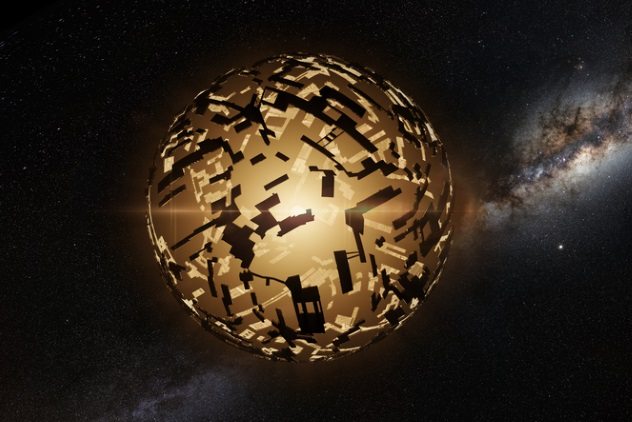This list drills down into the terms scientists and layman alike use in discussing the probability of extraterrestrial life. From theories explaining why we have yet to come across alien life to the terms used by scientists who are actively searching for it, this list can be your go-to guide for an introductory look at our ageless pursuit for extraterrestrial life.
10 Fermi Paradox
Enrico Fermi was an Italian-American scientist, born in Rome at the turn of the 20th century. A noted “architect of the nuclear age,” Fermi’s brilliance can’t be overstated. At 28, he was elected to the Royal Academy of Italy, the youngest inductee in its history. He went on to win the 1938 Nobel Prize in physics for his contributions to the discovery of induced radioactivity and was a core contributor to the Manhattan Project. Yet, among the accolades his name can be associated with, it’s his quandary regarding extraterrestrial life that stuck. The Fermi paradox is a relatively basic concept which asks if it’s easy, or even possible, for intelligent extraterrestrial life to develop, then why haven’t we come in contact with it? His comment, made at lunch with coworkers, went on to underscore fundamental notions about extraterrestrial life. Our galaxy has many stars similar to our Sun, and many are billions of years older. At least some of these stars likely have planets suitable for life orbiting them. Further, with the development of life comes the evolution of intelligent life and interstellar travel. Fermi believed that any intelligent civilization with adequate propulsion and even a modest thirst for conquest should have made itself known in the Milky Way by now.[1] So why hasn’t it? Our data about the observable universe suggests the presence of life should be noticed; that it isn’t has become one of the great paradoxes dictating our understanding of space.
9 Drake Equation
Frank Drake is an American astronomer and astrophysicist who developed a formula with quantifiable variables determining the presence of extraterrestrial life. Drake’s development of what came to be known as the Drake equation was mostly accidental. He was spearheading a meeting of like-minded astronomers at the National Radio Astronomy Observatory in Green Bank, West Virginia, in 1961 and lacked a structured agenda. A day before the conference, Drake shorthanded a formula for determining the possibility of intelligent life in our galaxy.[2] This formula is N = R x fp x ne x fl x fi x fc x L, where: N = the number of civilizations in our galaxy capable of communication R = average rate of star formation fp = proportion of those stars with planets ne = average number of habitable planets per star fl = fraction of habitable planets that go on to develop life fi = proportion of planets with life that develop intelligent life fc = intelligent life bearing planets where life develops detectable communication L = duration of time a civilization’s communication is detectable The Drake equation relies on multiple unknown variables, but it gave astronomers a concrete starting gate for deducing the presence of intelligent life throughout our galaxy. For more than 50 years, scientists have used Drake’s equation as their foundation for extrapolating the existence of intelligent extraterrestrial life.
8 Zoo Hypothesis
Star Trek fans recognize the Prime Directive as one of the core ethical tenets of the cosmos. Simply put, the Prime Directive forbids Starfleet communication with, or interference in, the development of fledgling civilizations across the universe. This means civilizations in their early years are left to develop undisturbed by outside forces. This conception of alien life, and why we haven’t encountered any, was suggested in 1973 by MIT radio astronomer John Ball as the zoo hypothesis.[3] Ball’s hypothesis asserts that alien civilizations may be observing a pact or treaty in which they actively avoid underdeveloped civilizations, like ours on Earth, which have not yet reached a level of interplanetary communication. There are several proposed reasons behind this avoidance, chiefly that it is to our benefit, or the benefit of other civilizations, that we be allowed to organically grow as a civilization. Simply put, the zoo hypothesis views humanity as part of a galactic sanctuary, off-limits to more advanced beings.
7 Great Filter
The concept of the Great Filter comes to us from economics professor Robin Hanson. In a nutshell, it responds to the Fermi paradox and all other claims explaining our lack of communication with extraterrestrial beings.[4] Hold onto your seat, because the Great Filter, depending on how its interpreted, is either incredibly optimistic or downright dreary. The idea proposes that at least one event in the timeline leading to intelligent life is highly unlikely. For example, it might be virtually impossible for the right star-planet interplay to develop, making subsequent life impossible. Or, the Great Filter may not be the development of life but rather the emergence of multicellular life. This would mean single-celled prokaryotic organisms are relatively common, but complex eukaryotic organisms rarely develop. There are many suggested Great Filter events that humanity has already accomplished, putting us on the right side of destiny. It would mean that humans on Earth have done the near-impossible, coming out the other side of an extremely rare galactic event. Now for the downside: We could be on the wrong side of the Great Filter. This would mean that it’s common for intelligent life like us to develop in the universe, but civilizations in our stage of development, or shortly after, face a crushing event that wipes them out. Given the times we live in, with climate change and nuclear proliferation, among other challenges, it’s possible that the Great Filter(ing) event is up ahead of us and that few to no civilizations make it out the other end.
6 The Kardashev Scale
The Kardashev scale was developed in 1964 by Russian astrophysicist Nikolai Kardashev.[5] Kardashev’s scale was designed to measure the energy potential of intelligent civilizations and used this measurement as a marker of their advancement. Kardashev’s original scale, later annotated by other scientists, suggested three types of civilizations: A Type I civilization can utilize all of the energy generated by a parent star on their home planet. With a Type I civilization, a planet’s energy absorption and production are captured and put to full use. Type II civilizations are capable of harnessing the entire energy production of a star. There are some pretty impressive renderings out there of how this might be done; one suggestion is the development of a Dyson sphere. A Type III civilization controls energy output at the scale of its entire galaxy, no small feat. Other scientists added Type IV and Type V civilizations, which would feature even more wild technologies. Type IV civilizations would be nearly capable of using the energy output of the whole universe. Type V civilizations would be able to manipulate the universe at will and would essentially be godlike. You may be wondering where humanity falls on this grand scale. Well, we’re at zero or close to it. Astronomer Carl Sagan suggested a ranking of around 0.7, given our current use of fossil fuels and other nonrenewable sources of energy. This means we’ve got some time before we even rank on Kardashev’s scale.
5 Multiverse Theory
We’re going to briefly step outside not only our galaxy but our whole universe. That’s because any discussion of extraterrestrial life isn’t complete without a nod to multiverse theory. Multiverse theory projects that there may be an unlimited number of alternative universes out there. In some cases, these other universes would be similar to the one we inhabit, where small differences lead to variations in space-time, catalyzing an infinite number of parallel universes. Secondly, cosmologist Alexander Vilenkin devised the “bubble universes” concept of the multiverse. In this case, our universe inflated exponentially after the Big Bang. Many other universes inflated as well, like a balloon, while others stopped growing at some point. This led to “pocket” universes, all cut off from one another, with novel laws of physics.[6] There are various iterations of multiverse theory, each with their own physical and metaphysical rules. Needless to say, it’s a lot to wrap one’s head around. As it relates to extraterrestrial life, just keep this in mind: We don’t know what life exists in our universe, and furthermore, we don’t know what life exists in other universes.
4 Aestivation Hypothesis
Aestivation refers to an animal’s period of inactivity, similar to hibernation, when its metabolic rate slows in response to high external temperatures and little water. Food and other resources may be scarce during a period of aestivation, so it makes sense for animals, like the crocodile, to lay low and not waste energy reserves. Applied at an interstellar level, the aestivation hypothesis dictates that earlier intelligent civilizations developed across the universe, but since the universe is still relatively new and hot, they’re waiting for it to cool off. Cosmic temperatures are currently high, putting a premium on processing efficiency. Think of it this way: Intelligent beings don’t want their supercomputers to overheat, so they are waiting (billions, maybe trillions, of years) for the universe to cool off and be more hospitable to exploration and exploitation.[7] This hypothesis offers an answer to the previously stated Fermi paradox. Where is everyone? Currently, they’re taking a nap.
3 SETI
The search for extraterrestrial intelligence (SETI) has been listening, patiently, for signals from extraterrestrial life for over 50 years.[8] Any 21st-century discussion of extraterrestrial life would be remiss without a nod to SETI. So, what exactly is SETI, and how does it work? The earliest attempts at SETI took place in the spring of 1960, directing microwave frequencies toward star systems similar to our solar system. The Soviet Union, meanwhile, was developing its own SETI strategies, including the creation of omnidirectional antennae, used to examine large swaths of the night sky for energy created by hyper-futuristic civilizations. The current international standard for SETI research employs radio telescopes to observe frequency aberrations that make their way into our atmosphere. Thus, much of SETI activity is directed at “listening” for signs of extraterrestrial life. The latest and greatest in finding aliens? That would be METI (Messaging Extraterrestrial Intelligence) International, which makes direct attempts to contact distant life-forms that may have an ear to the sky.
2 Gaian Bottleneck
In line with the Great Filter approach to extraterrestrial life is the Gaian Bottleneck concept. Four billion years ago, Venus, Earth, and Mars may have all had conditions suitable for life to form. Yet, subsequently, Venus heated up exponentially, while Mars froze over. Many astronomers believe scenarios like this are quite common in the universe, meaning there may be a plethora of planets offering optimal environments for early life to form, but that life can’t adapt and stabilize on the planet in time to evolve into complex organisms. This is where the Gaian Bottleneck exists, soon after the development of simple organisms, which may be abundant in the universe. Few of these organisms, possibly only us, were able to clear the bottleneck and evolve past being prokaryotic. As we explore the far reaches of the universe, it is quite possible we will come across countless fossilized microbes, proof that life is common in our universe.[9] Intelligent life . . . not so much.
1 Mediocrity Principle
We close out this list with a relatively simple addition, albeit one at the very heart of how we think about extraterrestrial life. The mediocrity principle suggests that an item drawn at random from a large set of objects will most likely be from one of the more common categories within the group.[10] Think of it this way: A hat has ten pieces of paper. Nine of them are red, and one is green, but you don’t know this ahead of time. You draw a red piece of paper. Applying the mediocrity principle, you assume, based on the laws of probability, your paper is from a relatively common grouping. Applied to cosmology, the mediocrity principle is used to say that Earth is statistically most likely to be among the majority group of planets, meaning planets like Earth are plentiful throughout the universe. On the flip side, the rare Earth hypothesis suggests that Earth, picked at random among the planets, just happens to be that green piece of paper. Who’s to say if the mediocrity principle or the rare Earth hypothesis is correct. Until we discover extraterrestrial life (or they discover us) it’s anybody’s guess. Evan Beck is a freelance writer currently residing in the San Francisco Bay Area.
























